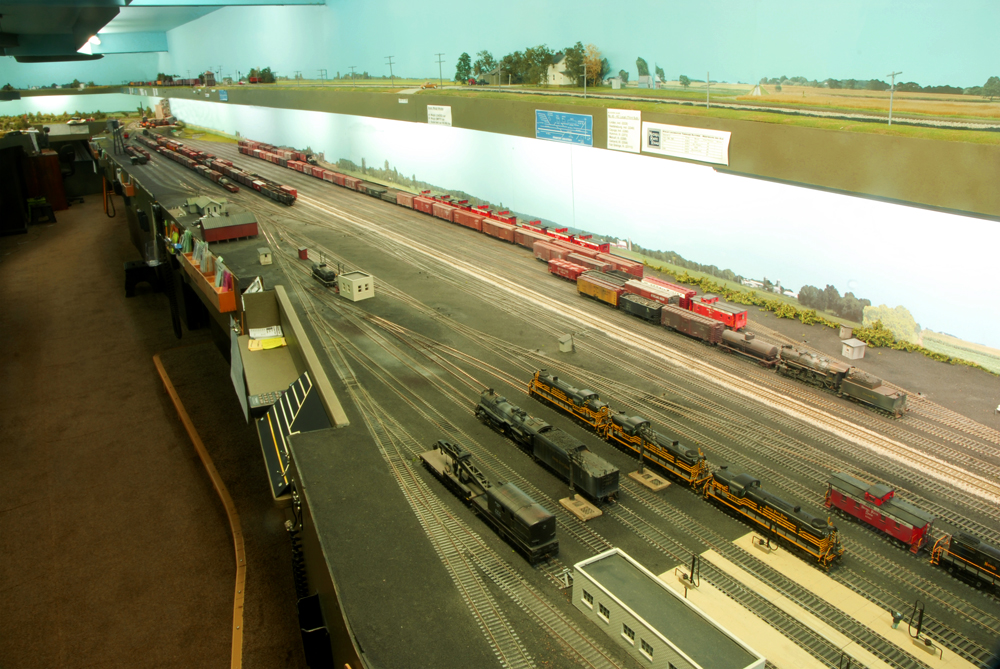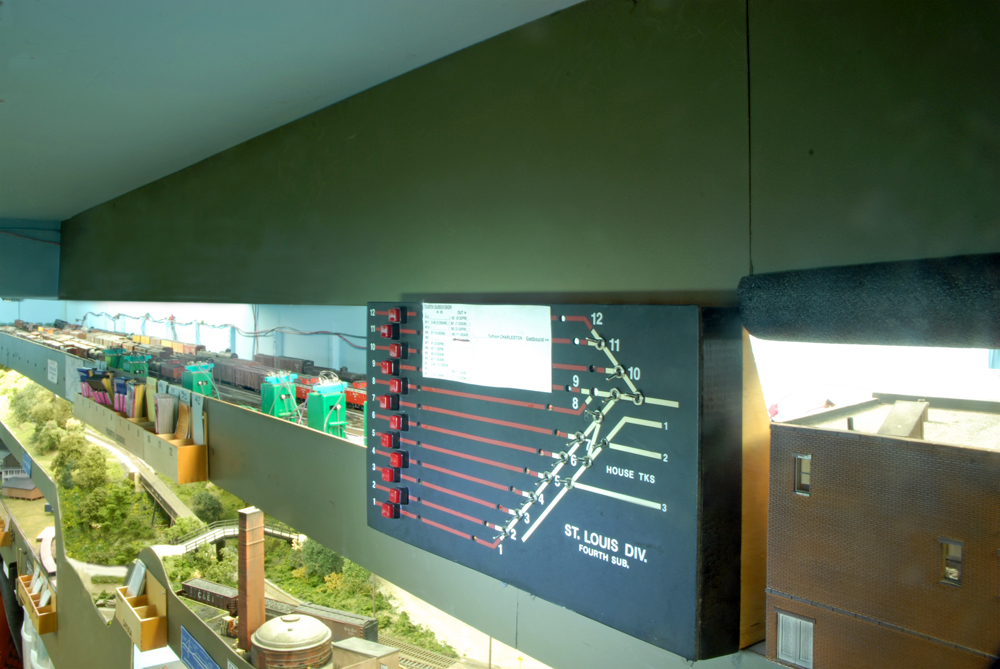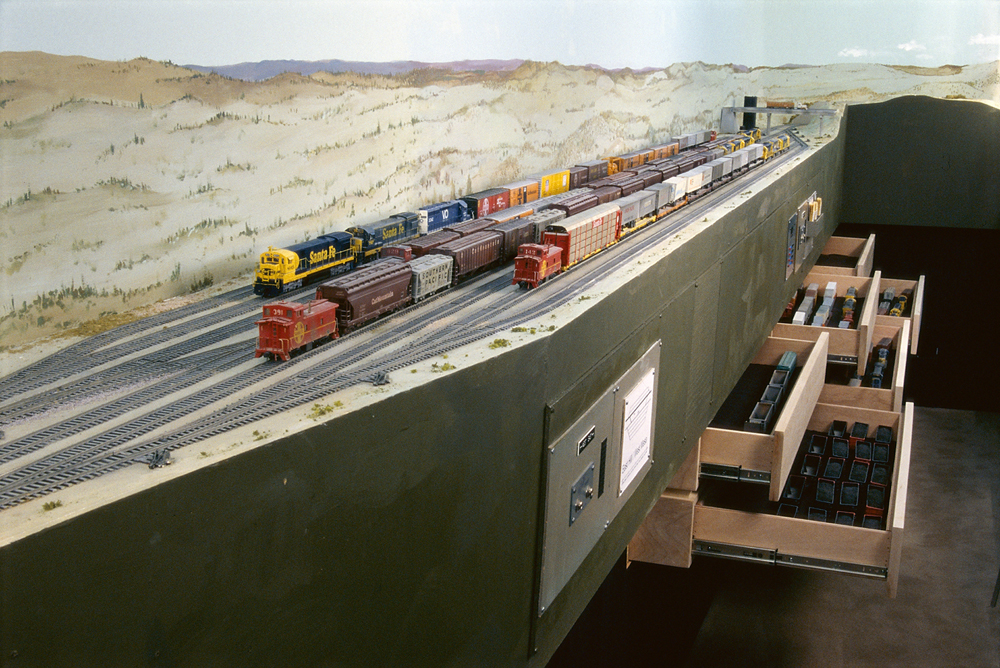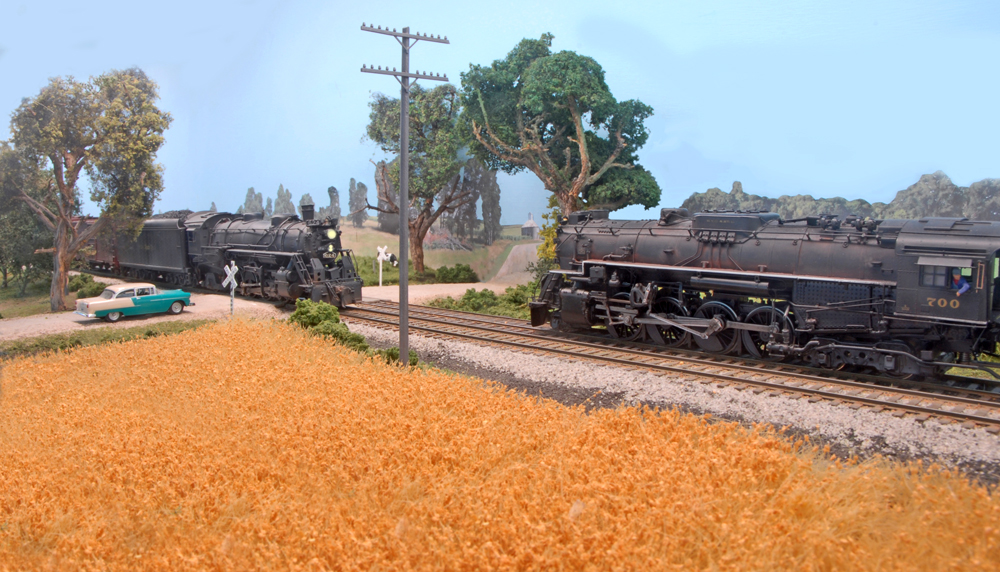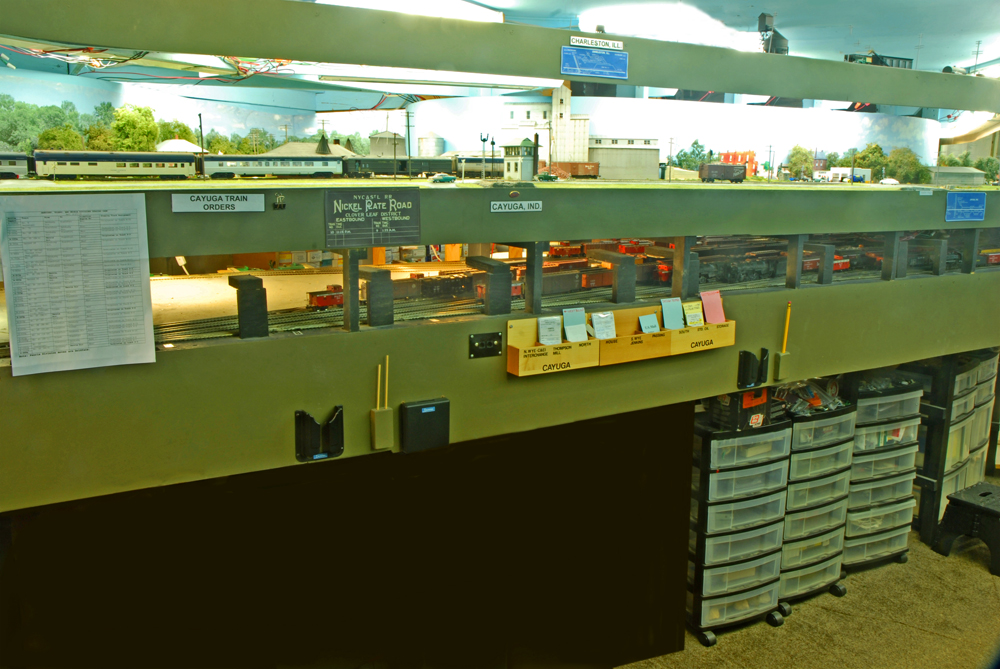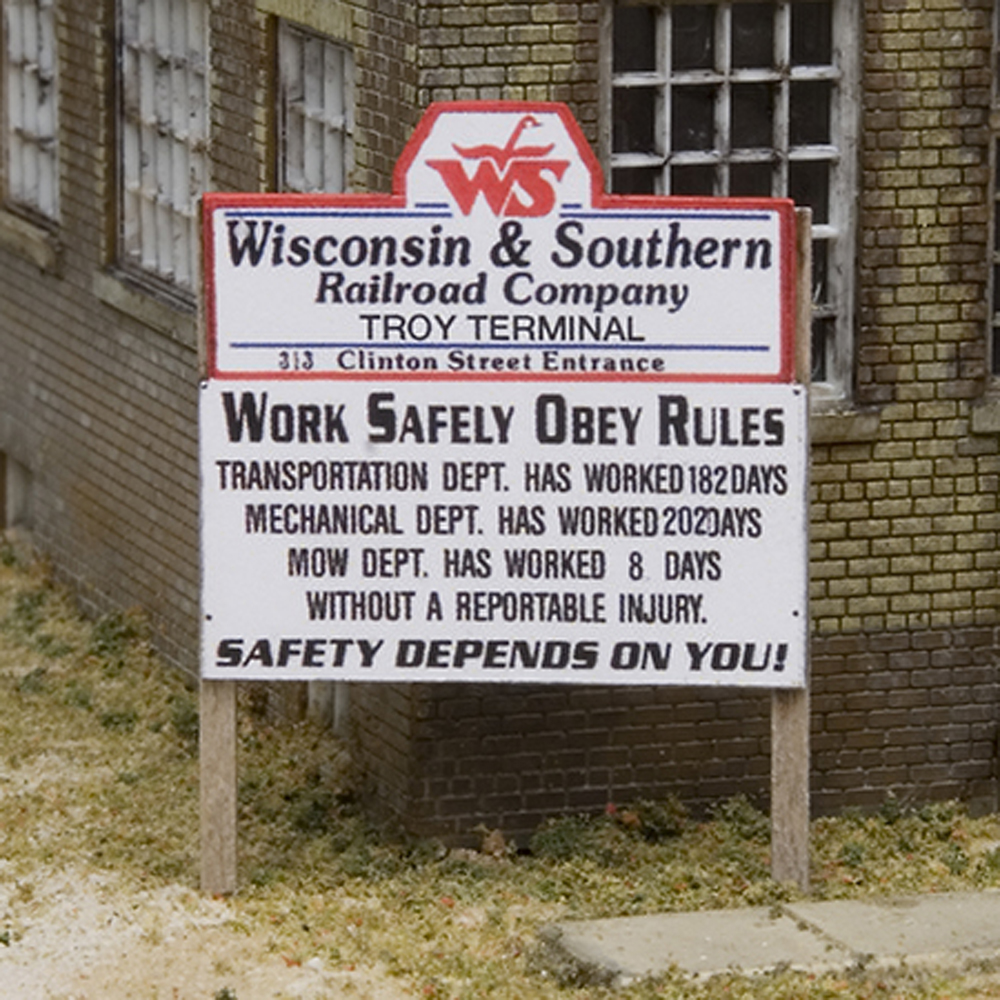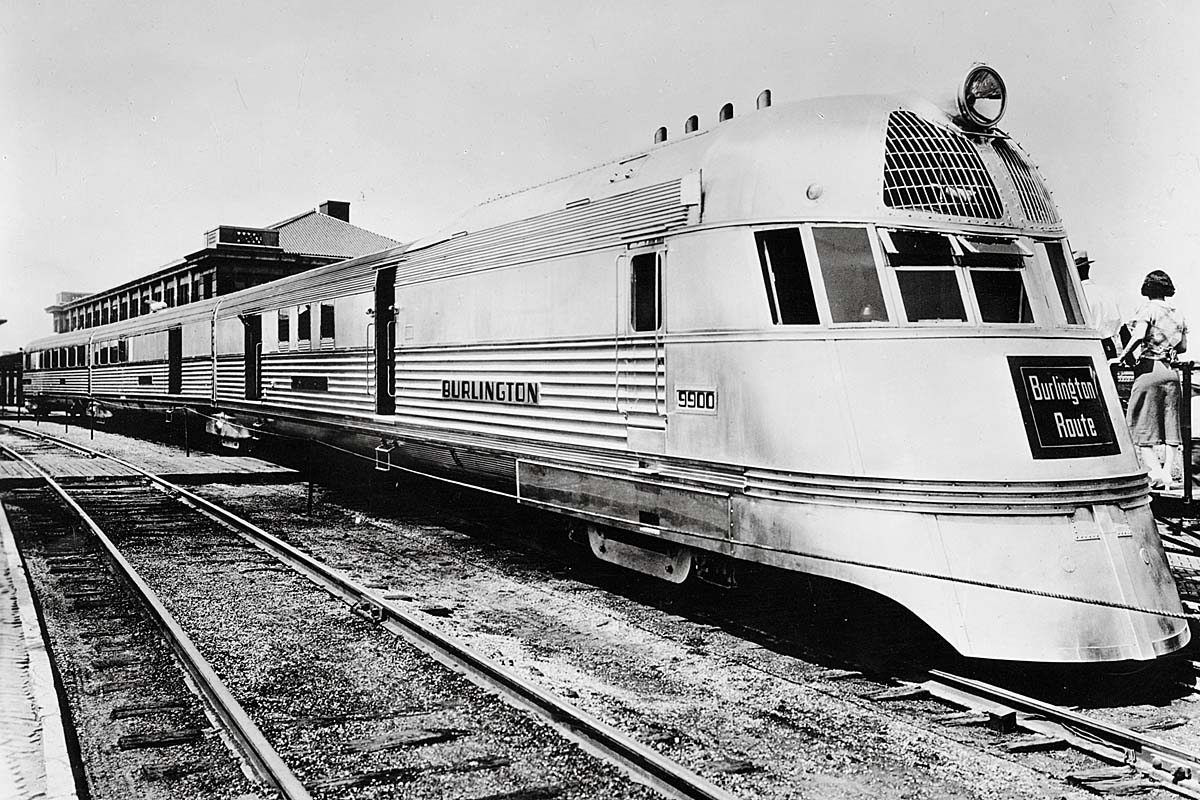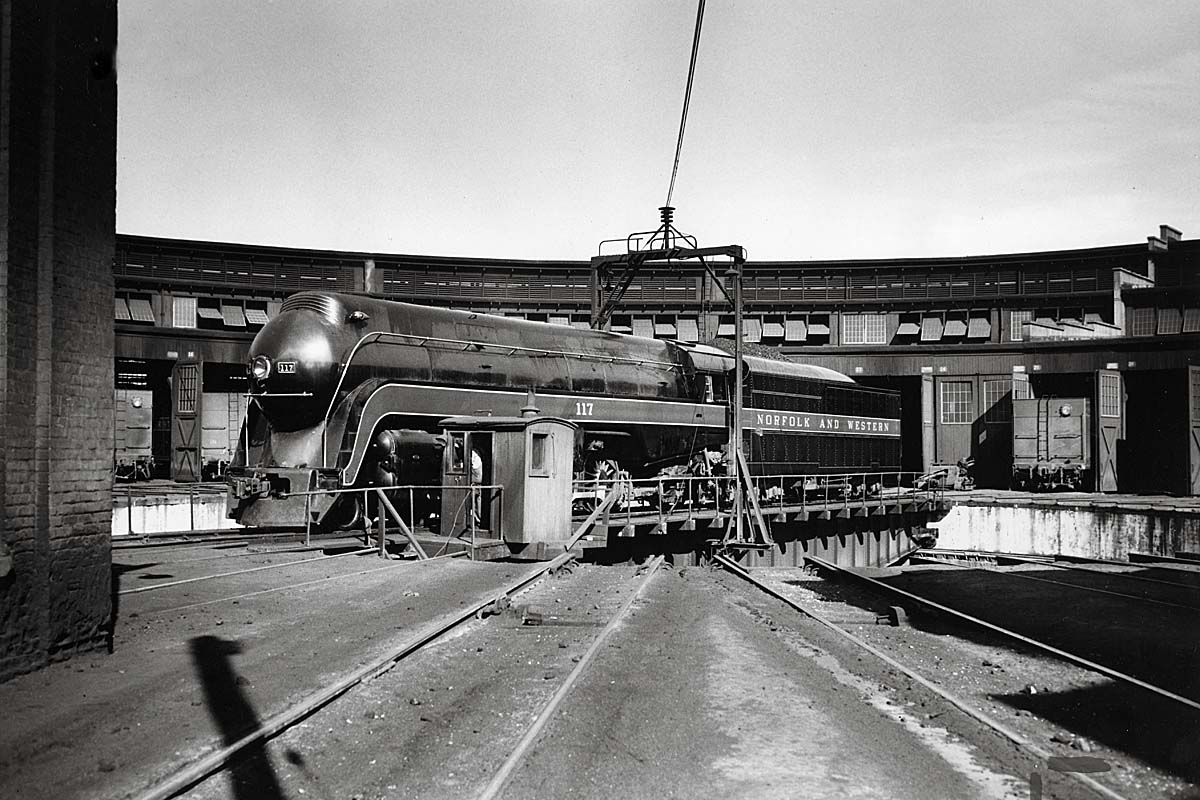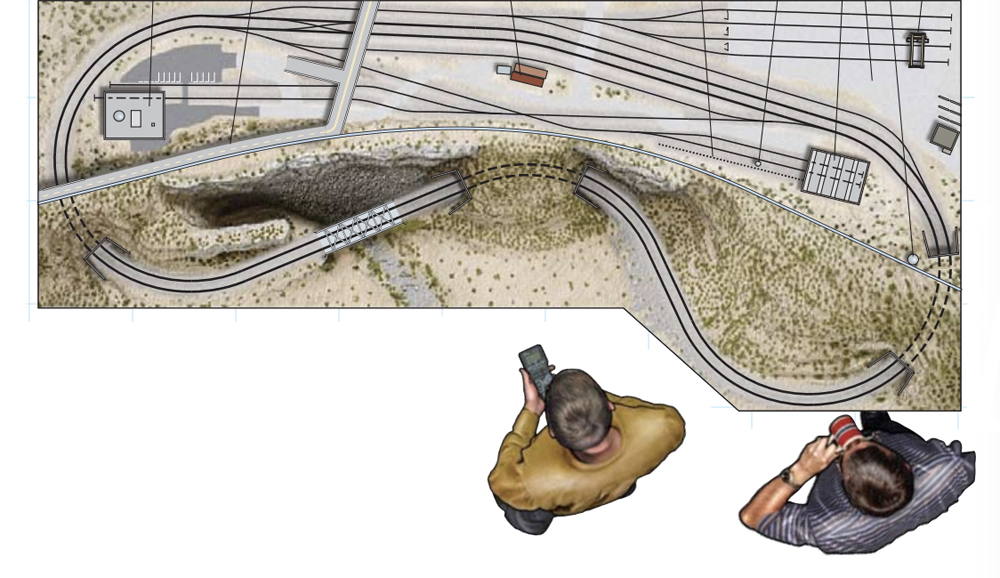Why do you stage a model train layout?
Let’s be clear about the need for staging. Unless you’re modeling a very small railroad or perhaps a branch line, you’re faced with the need to simulate the connections that the part of the railroad you’ve opted to model makes with the rest of that same railroad or with other railroads.
Way-to-go waybills!
Staging is almost never what I’d call fun.
Some of this work of setting up individual car and locomotive locations could probably be computerized. But I do what the prototype did in 1954: use paper waybills that travel with the person responsible for the train.
Why? It’s relatively easy to make up the cards and an operator can typically identify car type and reporting marks by sight less expensively than any computerized radio-ID solution. But organization is key, without it, you’re just moving trains around.
Fiddle yards: real-time solution
The most elegant solution to the need to re-stage the railroad between operating sessions is to do so during the session using fiddle yards. The concept originated in the United Kingdom where layout space is often limited.
North American fiddle yards are fully operational yards but usually lack scenery. They typically have locomotive turning facilities for steam-era railroads to minimize handling, and they’re fed by shelves or drawers that allow a person to quickly change consists.
Railroads that employ moles, out-of-public-view operators, still need to cycle waybills at each industry between operating sessions. That could be done during sessions by assigning a person as a general freight agent who monitors in- and- outbound traffic and cycles waybills as he or she feels is appropriate or as stated on a job aid.
Important Tip: I strongly advise against having road crews cycle waybills. Experience has shown that this will be at best a hit-and-miss proposition. It’s better that they simply “read and heed” the instructions on the waybill and let the layout owner or general freight agent handle the cycling duties. It’s more realistic that way, too.
Hidden vs. visible staging
I’ve always been a proponent of hiding the staging yards based on the idea that the trains that originate or terminate there are supposed to be miles and miles away from the modeled portion of your railroad. Convenient access aside, if I can see it sitting there, the illusion is gone.
Based on experience, road crews — model train operators — don’t deal with staging. Instead, different operators handle staging yards or switching yards.
A friend coached me to understand that road crews would derive a lot more satisfaction from a terminal-to-terminal trip rather than if they had to begin or end their runs in a hidden staging yard. It pays to listen to those who have done their homework.
Worth the effort
The bottom line is that the time and effort required to stage a railroad for an operating session isn’t one of the most enjoyable aspects of scale model railroading, but it’s worth the effort. None of us can think of an alternative short of not holding regular operating sessions at all, and frankly we’ve had our fill of that during the recent national health emergency.
